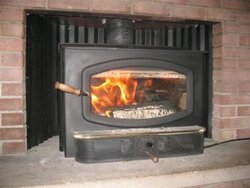Last night, when I was fiddling with the fire, it dawned on me that those of us with inserts have a disadvantage when it comes to burn times due to the fact that we can only adjust the primary air while those of you with free standing stoves can adjust the air on your flues too.
Is that true?
Is that true?


